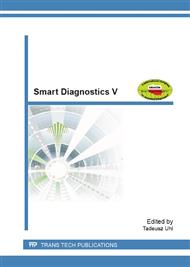p.249
p.257
p.266
p.276
p.281
p.290
p.302
p.310
p.318
The Method for Identification of Damping Coefficient of the Trucks Suspension
Abstract:
The modern commercial vehicle with a weight of more than 3,5 [Mg] is a complex design solution, which contains many of mechatronic systems. The standard equipment are the ability of the driver assistance systems such as ABS (Anti-Lock Braking System), ESP (Electronic Stability Program), ASR (Acceleration Slip Regulation). The technical condition of the modern car's suspension determines the value of the indicators of road safety. An essential element of the suspension system, whose function is to change the mechanical vibration energy into thermal energy, is the shock absorber. Incorrect functioning of shock absorbers affects the quality of the operation of these systems improve safety. In the case of gradually wears of shock absorber even an experienced driver is able to notice this phenomenon. For this reason it becomes necessary the need for regular technical condition monitoring of dampers. Diagnostic dampers on buses and trucks are limited to the organoleptic examination and propose based on intermediate symptoms such as accelerated tire wear. The paper describes the method for estimating the suspension damping characteristics of commercial vehicle in operating conditions.
Info:
Periodical:
Pages:
281-289
Citation:
Online since:
October 2013
Authors:
Price:
Сopyright:
© 2014 Trans Tech Publications Ltd. All Rights Reserved
Share:
Citation:


